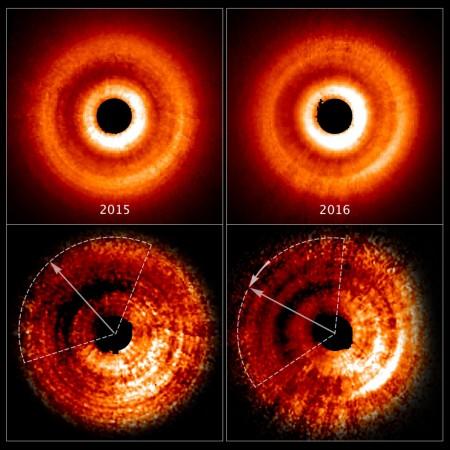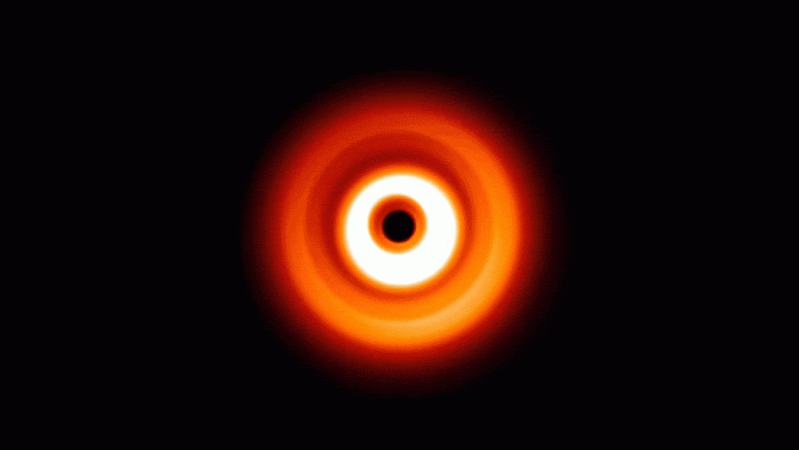
A strange shadow was spotted on the ring of the young star TW Hydrae, alluding to the presence of an exoplanet within the ring, a new study revealed. The ring comprises gas and dust and spotting planets is an ardous task.
Also Read: Revealed! 97% of human body is made up of stardust!
The team of researchers was led by John Debes of the Space Telescope Science Institute in Baltimore, Maryland.
The researchers have been scoping out the young star for the last 18 years before the mysterious shadow was observed. Located in the constellation Hydra, the star is around right million-years-old and is 192 light-years from Earth.
The images were taken by the Hubble Space Telescope. The researchers noted that the mysterious shadow appeared around the 66-billion-kilometre-wide (41 billion miles) ring, once every 16 years.
"This is the very first disk where we have so many images over such a long period of time, therefore allowing us to see this interesting effect," John Debes said in a statement published in hubblesite.org.
"That gives us hope that this shadow phenomenon may be fairly common in a young star," he added.

If the researchers' hypothesis is anything to go by, the shadow might be the outcome of the exoplanet's gravity preventing light reaching the outer limits.
As per astronomers' estimations, the exoplanet is located at a distance of 160 million km (100 million miles) from the young star TW Hydrae; which is equal to 1AU or the distance from the Earth to the Sun.
The proximity to the star makes it difficult for Hubble and other telescopes to get conclusive images of the planet. Moreover, planets that orbit close to the parent star run the risk of being eaten by it.
"The putative planet must be about five times more massive than Jupiter to sculpt the inner disk in this manner," the researchers stated.
Debes presented the results at the 229th meeting of the American Astronomical Society in Grapevine, Texas, on Saturday, January 7 2017.
The research is a positive step towards a potential way to find young planets hidden in the inner rings of young stars, the team said.
"What is surprising is that we can learn something about an unseen part of the disk by studying the disk's outer region and by measuring the motion, location and behaviour of a shadow," Debes said.
"This study shows us that even these large disks, whose inner regions are unobservable, are still dynamic, or changing in detectable ways which we didn't imagine," he concluded.















